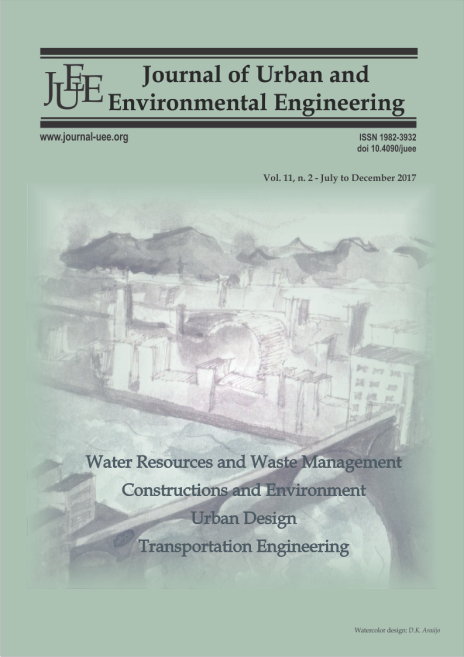CASE STUDY ON NITRIFICATION RATES IN A NON-STIRRED MEMBRANE-AERATED BIOFILM REACTOR OPERATED UNDER LAMINAR REGIME
DOI:
https://doi.org/10.4090/juee.2017.v11n2.193-201Keywords:
Membrane-aerated biofilm reactor, counter-diffusive biofilm, nitrification, biological wastewater treatment, electrical conductivity.Abstract
A lab-scale non-stirred membrane-aerated biofilm reactor with a volume of 14.2 L was operated under laminar flow regime with inorganic synthetic wastewater to assess tertiary nitrification rates. Nitrifying counter-diffusive biofilm grown over microporous polypropylene tubular membranes supplied with atmospheric air at low pressure (3.45 kPa). The reactor was operated at very low water-velocities (in cm/s): from 2.3×10-4 to 2.3 × 10-3. In all runs, the influent ammonium concentration was kept constant ( 26 mg-N/L). By changing the volumetric inflow, the membrane-aerated biofilm (MAB) was tested at seven different ammonium applied loads (range: 0.57 - 6.04 g-N/m2 d). The corresponding ammonium removal rates ranged 0.56 to 3.02 g-N/(m2 d). The percentage of biological ammonium removal presented a range from 50% to 98%. As expected, due to passive experimental dynamic conditions to achieve an ammonium removal percentage greater than 80% a hydraulic retention time of 19 h was required. Clean membrane oxygen transfer rate was evaluated. The nitrifying MAB was found to enhance the oxygen transfer across the membrane when the surface nitrification rates were high. A significant drop in electrical conductivity that is proportional to the ammonium removed was observed. Thus, conductivity measurement can be used as a simple control method of ammonium removal extent. Effluent suspended solids were not detected, therefore a sedimentation process was unnecessary.Downloads
Download data is not yet available.
Downloads
Published
2018-06-27
Issue
Section
Articles




